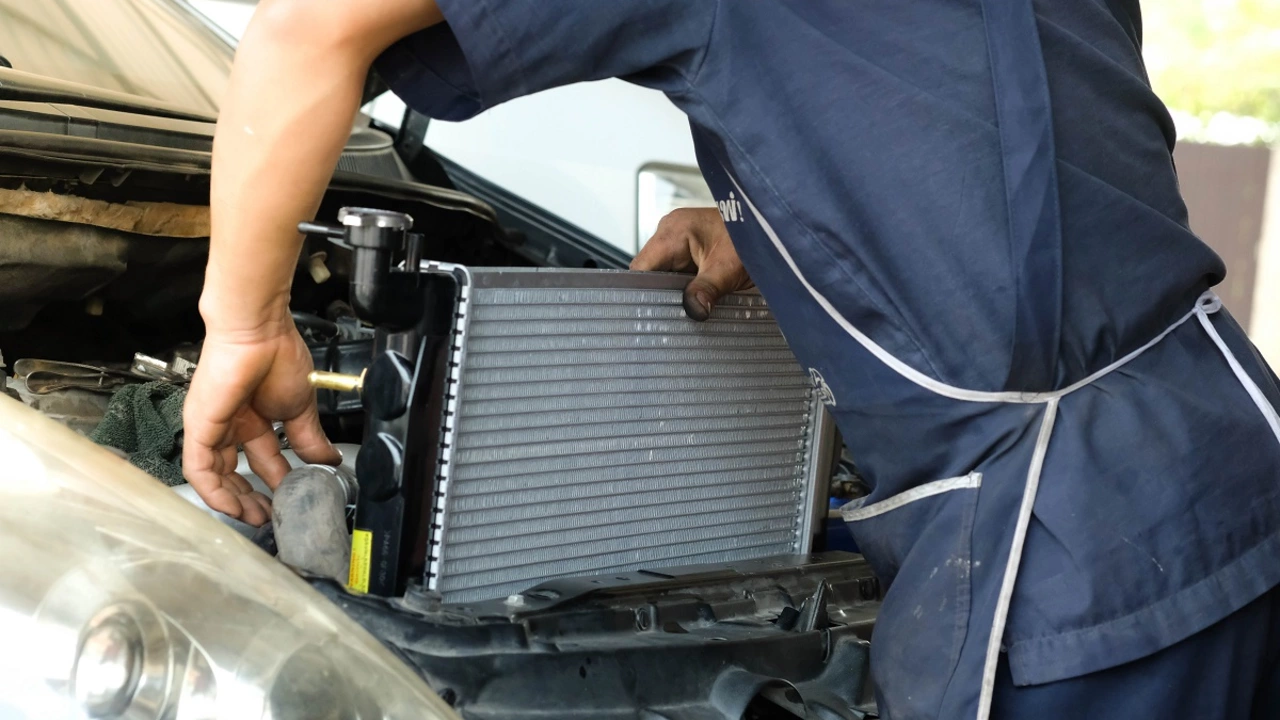Car Radiator Guide: How It Works, Common Issues & Simple Maintenance Tips
If your engine feels hot, the radiator is probably the first thing to check. It’s the heart of the cooling system, moving heat away from the engine so your ride stays smooth. Below you’ll find clear explanations and practical steps you can take right now.
How a Car Radiator Works
A radiator looks like a metal box with plenty of tiny tubes. Hot coolant from the engine flows into these tubes, while a fan pushes air through the fins attached to the outside. As the air passes, heat transfers from the coolant to the air, cooling the liquid before it heads back to the engine.
The whole process is controlled by the thermostat. When the engine is cold, the thermostat stays closed, keeping the coolant circulating inside the engine to warm up fast. Once the optimal temperature hits, the thermostat opens, letting the hot fluid move into the radiator. If any of these parts fail – a stuck thermostat, a clogged radiator, or a broken fan – the engine can overheat quickly.
Tips to Keep Your Radiator in Top Shape
1. Check coolant levels regularly. Open the radiator cap only when the engine is cold. The coolant should sit between the “low” and “full” marks. Top it up with the right mix of water and antifreeze if it’s low.
2. Look for leaks. Small drips under the car or a sweet, oily smell can mean a cracked hose or a bad seal. Catching leaks early saves you from costly repairs later.
3. Flush the system every 2‑3 years. Over time, rust and mineral deposits build up inside the radiator and block the flow. A flush removes these deposits and restores cooling efficiency.
4. Keep the fins clean. Dirt and bugs can clog the tiny fins, reducing airflow. Use a soft brush or compressed air to clean them gently – avoid bending the fins.
5. Test the fan. Turn on the AC; the fan should kick in automatically. If it doesn’t, the fan motor or relay might need replacement.
6. Watch the temperature gauge. If the needle climbs past the normal range, pull over safely, turn off the engine, and let it cool. Continuing to drive can damage the head gasket.
7. Replace the thermostat if you notice slow heating. A thermostat that sticks closed keeps coolant trapped in the engine, while one stuck open prevents the engine from reaching its ideal temperature.
Most radiator problems are avoidable with a quick visual check and a few simple habits. If you’re ever unsure, a local mechanic can run a pressure test to pinpoint leaks or blockages.
Remember, a well‑maintained radiator not only prevents overheating but also improves fuel efficiency and extends engine life. So next time you see that temperature gauge rise, you’ll know exactly what to do.

What are the implications of an object in a car radiator?
Having an object in your car radiator can lead to serious issues. It can obstruct the flow of coolant, causing your engine to overheat and potentially leading to costly repairs or even engine failure. Additionally, the object might damage the radiator itself, causing leaks. It's important to regularly check and maintain your car's radiator to prevent such problems. If you suspect something's amiss, get it checked by a professional immediately.
View more